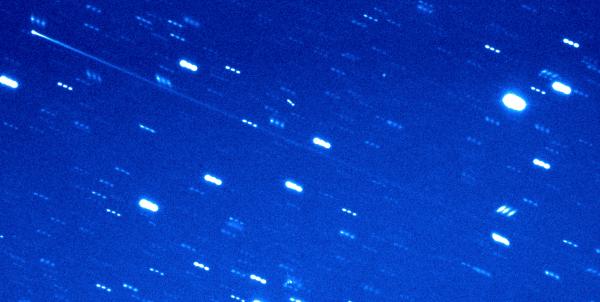Astronomers find extremely rare hybrid of comet and asteroid that could reveal secrets of life on Earth
The new discovery could reveal vital information about how water, and life, developed on Earth

Your support helps us to tell the story
From reproductive rights to climate change to Big Tech, The Independent is on the ground when the story is developing. Whether it's investigating the financials of Elon Musk's pro-Trump PAC or producing our latest documentary, 'The A Word', which shines a light on the American women fighting for reproductive rights, we know how important it is to parse out the facts from the messaging.
At such a critical moment in US history, we need reporters on the ground. Your donation allows us to keep sending journalists to speak to both sides of the story.
The Independent is trusted by Americans across the entire political spectrum. And unlike many other quality news outlets, we choose not to lock Americans out of our reporting and analysis with paywalls. We believe quality journalism should be available to everyone, paid for by those who can afford it.
Your support makes all the difference.Scientists have found a rare object in our solar system that has the characteristics of both a comet and an asteroid.
Comets are usually found from the cold outer solar system, beyond the orbit of Neptune, and are caused by the transformation of ice into gas – a process known as sublimation.
Their highly elongated orbits only bring them close to the Sun and the Earth for a short period of time, which heats them up and produces their signature tails.
Asteroids, on the other hand, are usually found between Mars and Jupiter in the asteroid belt and have thought to be in the warm part of our system for nearly five billion years – and typically, these objects contain no ice.
There are a few unusual exceptions to this dichotomy, however, known as “main belt comet”. This one, known as Asteroid 248370, is one of approximately 20 objects that have currently been confirmed or are suspected to exist.

“248370 can be thought of as both an asteroid and a comet, or more specifically, a main-belt asteroid that has just recently been recognised to also be a comet,” Planetary Science Institute senior scientist Henry Hsieh said.
“It fits the physical definitions of a comet, in that it is likely icy and is ejecting dust into space, even though it also has the orbit of an asteroid. This duality and blurring of the boundary between what were previously thought to be two completely separate types of objects – asteroids and comets – is a key part of what makes these objects so interesting.”
The asteroid has a solid head approximately two miles across surrounded by a dust cloud, with a 450,000 mile-long tail but only 900 miles wide.
“This extremely narrow tail tells us that dust particles are barely floating off of the nucleus at extremely slow speeds and that the flow of gas escaping from the comet that normally lifts dust off into space from a comet is extremely weak. Such slow speeds would normally make it difficult for dust to escape from the gravity of the nucleus itself, so this suggests that something else might be helping the dust to escape. For example, the nucleus might be spinning fast enough that it’s helping to fling dust off into space that has been partially lifted by escaping gas,” Hsieh said.
The discovery of this strange object will spark further study, as it is thought that a substantial part of Earth’s water was delivered via impacts from asteroids in the main belt. These rocks offer a potential way to test that hypothesis and gain more information about the origin of life on Earth.
Join our commenting forum
Join thought-provoking conversations, follow other Independent readers and see their replies
Comments